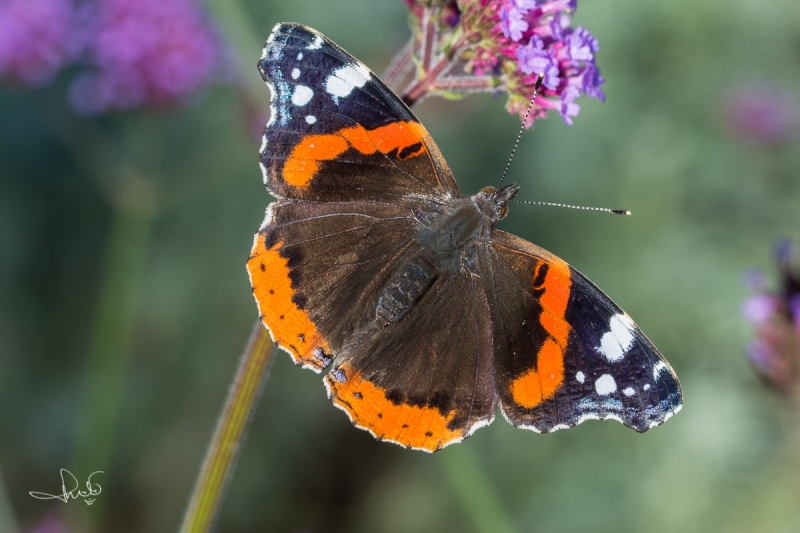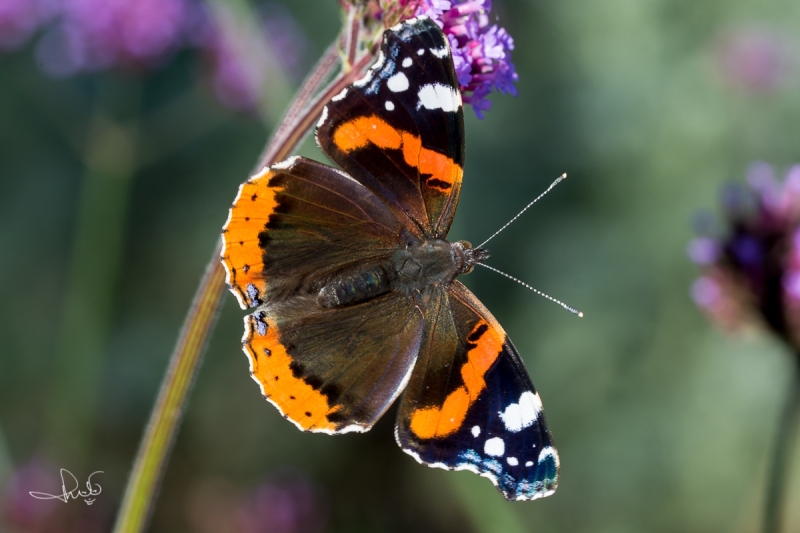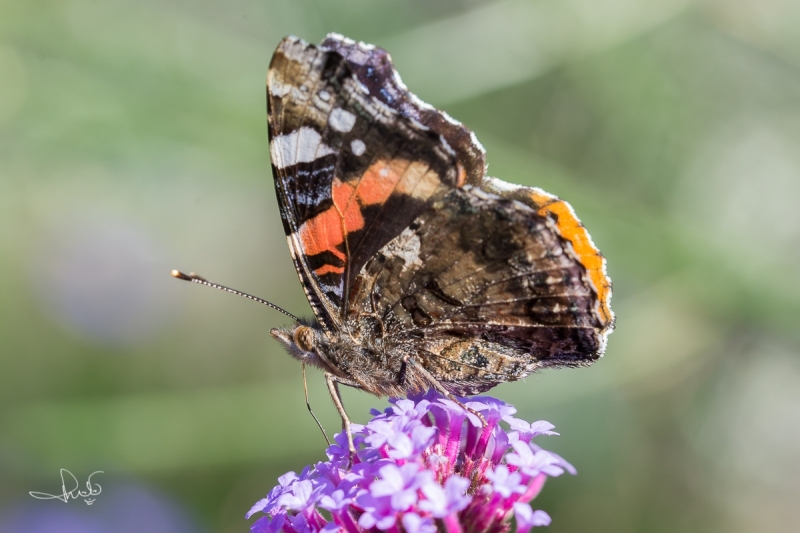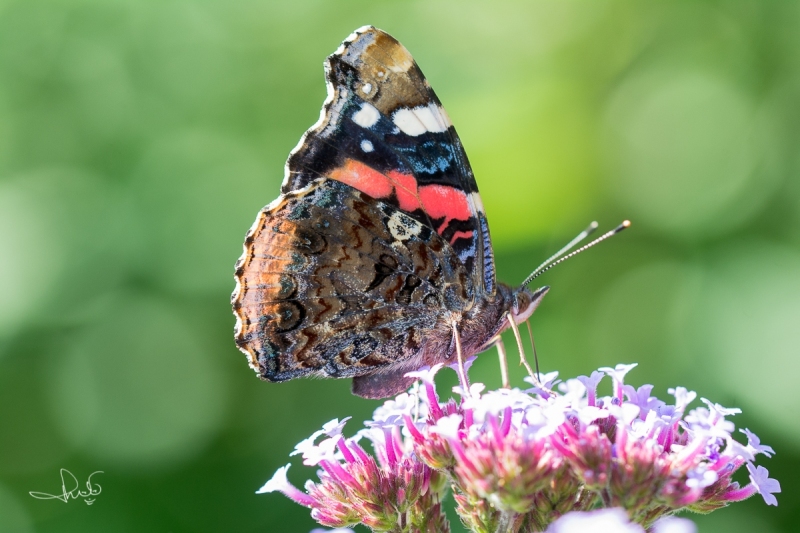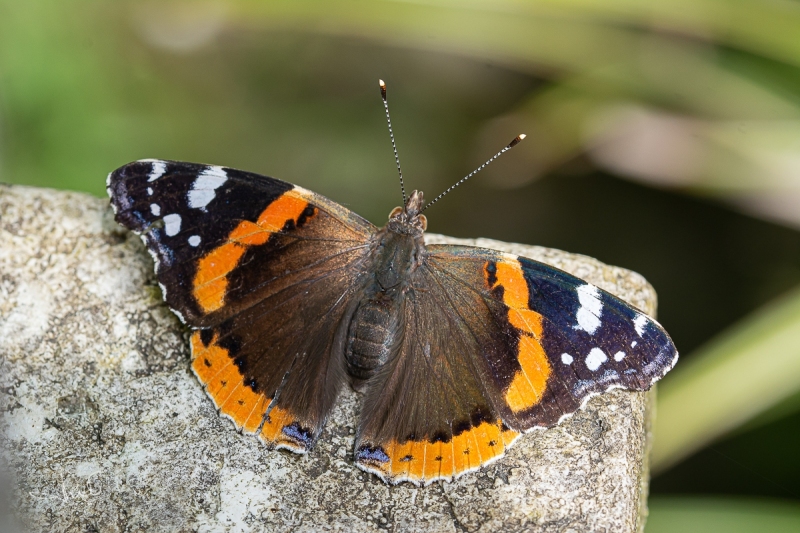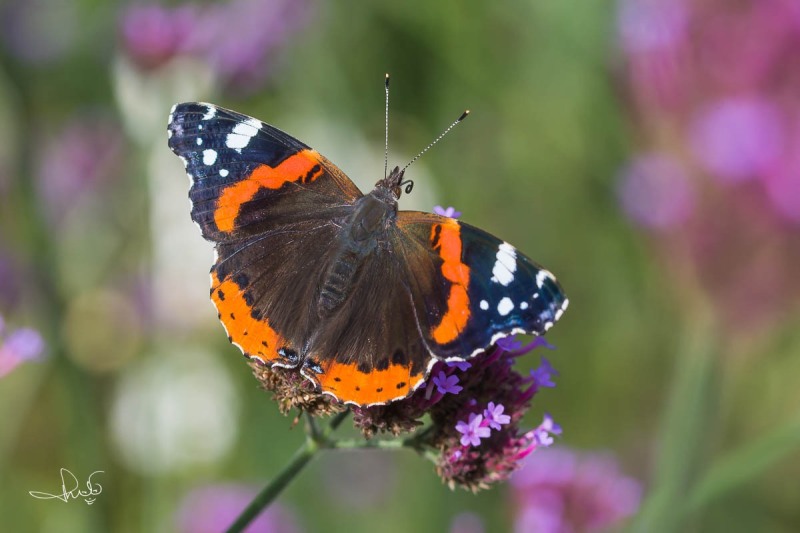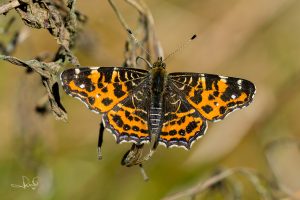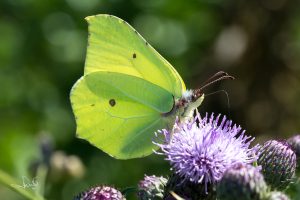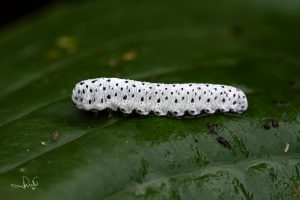The red admiral (Vanessa atalanta) is a very common species in the Netherlands. It is not without reason that it is often at the top of the list in the Dutch National Butterfly Count. That is not a surprise, because this butterfly feels at home everywhere. It’s also not picky about its host plant namely the common nettle (Urtica dioica). This is the plant on which the female lays her eggs and which the caterpillars then feast on. This common nettle is found everywhere, sometimes in large numbers. That is why it is important to leave common nettles in your environment. It’s an important host plant for a number of butterfly species, not only the red admiral. So if you want butterflies in your garden, you have to grow more than only nectar plants such as butterfly-bush (Buddleja davidii), vervain (Verbena) and hemp-agrimony (Eupatorium cannabinum). A corner with common nettles is also very important.
To Southern Europe
Everyone has heard of migratory birds. A lot of birds, from small warblers to ospreys and harriers, migrate to warmer places in winter. They can cover considerable distances and that is certainly not easy for the little ones. Many do not reach their destination in Africa and quite a few are also killed on the return journey. But what many may not know is that there are also migratory butterflies and the red admiral is one of them. In autumn these creatures fly with their fragile wings towards southern Europe to spend the winter there. There are not that many butterfly species that migrate; the most well-known in the Netherlands is, besides the red admiral, the painted lady (Vanessa cardui). And perhaps you have heard of the monarch butterfly (Danaus plexippus), which migrates from Northern America to South America in autumn and back in spring. But also common moths such as the silver Y (Autographa gamma) and the hummingbird hawk-moth (Macroglossum stellatarum) migrate.
One-way traffic
There is an important difference with migratory birds. These birds fly back and forth several times during their lives. With butterflies, however, it’s a one-way trip. These creatures do not live very long as imagines anyway, but in addition, their wings are so worn out after such a trip that they would not be able to make the return journey. Not much is known about butterfly migration yet, because unlike birds, butterflies are difficult to track. A bird is ringed, or nowadays increasingly fitted with a GPS-transmitter. And through reports from the rings or through GPS data, a good picture can be obtained of the route the birds take and where they spend the winter. With butterflies this is somewhat more difficult. There have been experiments with stickers on the wings or small dots of paint at their body. But the number of reports is so small that no conclusions can be drawn from this. However, mass migration of butterflies is sometimes observed. For example, recently on September 13, 2024, thousands of red admirals were counted in the Netherlands that were on their way south.
The reasons for the migration
There are several reasons for the butterfly migration. First of all, of course, a survival strategy. As a butterfly, there is relatively little of interest here the Netherlands during a cold winter. There is hardly any nectar to be found. A second reason for the butterfly migration is the expansion of the distribution. By fanning out from the existing population, new ones can arise elsewhere and a better genetic mix is also achieved with existing populations there.
Stayers
In recent years, we have seen the phenomenon that some, normally migrating, birds stay here in winter. This is probably due to climate change. For example, it happens more and more that I see a blackcap (Sylvia atricapilla) or a chiffchaff (Phylloscopus collybita) in our garden during wintertimes. Marsh harriers (Circus aeruginosus) also do not all migrate to Africa anymore, some do move down a bit, but stay in the southwest of the Netherlands. In the past, I hardly saw any lapwings (Vanellus vanellus) when I was young. However nowadays, as long as it doesn’t get too cold, you can still see groups of lapwings in winter. It is the same with migratory butterflies. In recent years several dozens of red admirals have been seen in the southern half of the Netherlands during winter, often in gardens. On sunny days, as long as the temperature is not too low, they still fly around although a bit aimlessly, because they will not find much food. By doing so they are taking a huge risk, because unlike the butterflies that hibernate here, such as the peacock (Aglais io), the brimstone (Gonepteryx rhamni) and the small tortoiseshell (Aglais urticae), the red admiral cannot cope with extreme cold. So when temperatures drop below freezing they are in big trouble and will not survive a period of frost.
So, with a little bit of luck you will see a red admiral on a sunny winter day.
Sources (most in Dutch):
- www.vlinderstichting.nl
- www.vlindermee.nl
- www.etymologiebank.nl
- www.ukbutterflies.co.uk
- www.wikipedia.nl
This blog was originally published in Dutch on October 8th 2017.



